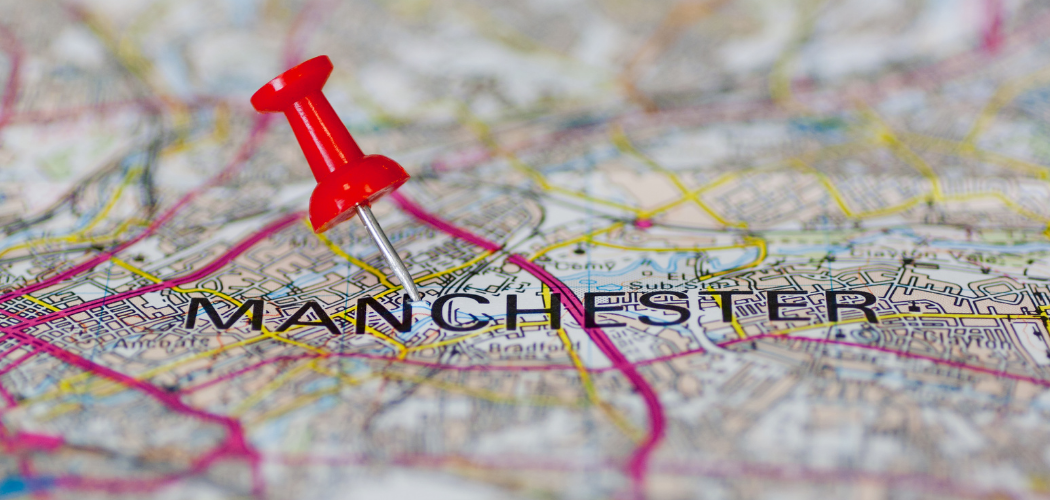Kathleen Calder and Shawndra Hayes-Budgen ~ Learning Designers
This year’s Association for Learning Technologies conference (aka ALTC24) was held over three days in September in Manchester, England. We were invited to share experiences of using Miro to support remote teamworking and to launch the new ALT Digital Sustainability SIG. We’d delivered presentations for ALTC remotely in the past few years and were nervous about being accepted to present live and in person to our peers. Ultimately though, the nerves were all for naught – we felt welcomed and supported throughout or experience. We made some new friends and caught up with old ones too.
It was a busy and intense experience with a plethora of sessions to choose from plus the highlight of a gala dinner where we were treated to a trip back to the 90’s music scene by a live Brit-pop covers band. With so many talks and workshops, we couldn’t attend every session but learned something useful from all the ones we could.
The topic of how ways of working changed during covid lockdown came up a lot, which chimed with a focus of our own presentation. Student experiences of technology in education and accessibility considerations was another area we were keen to find out more about.
Keynotes: engagement and technology
Humane technology
The Day 1 Keynote from Chris Friend on Humane Education discussed empowering students with humane technology. All learning takes place in a physical space and student choice in how they interact with technology is fundamental. Chris recommended use of technology that has benefits to the student outside of the ‘classroom’. Educators should be transparent about the choice of technology, offer agnosticism to allow students to make meaningful choices and encourage students to create content for ongoing engagement.
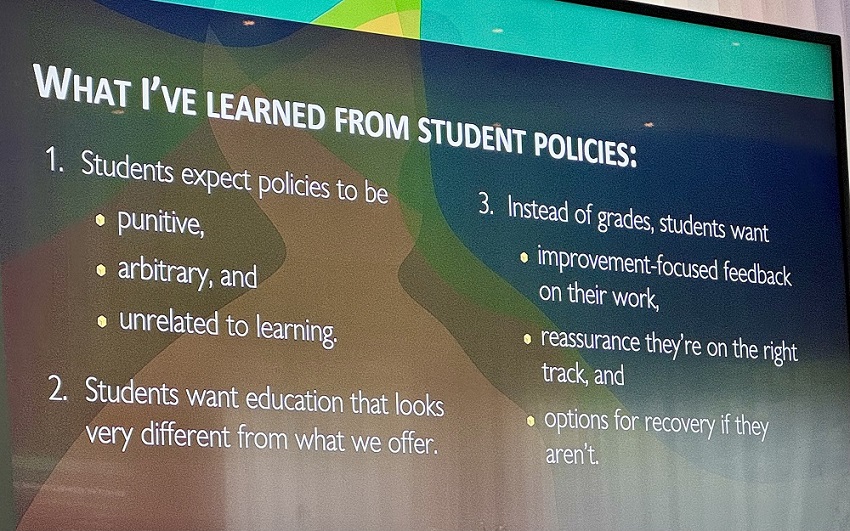
Simple can be better
The theme of engagement and technology continued in the Day 2 Keynote ‘Imagining the future of education and technology’. A panel of students from Leeds University and Edge Hill University discussed their experiences of technology. Positives included having recorded lectures and notes available, useful as a back up and for revision rather than a replacement for engagement. They found having these to be motivating. They felt there was a need for lectures to be more engaging and active, using group tasks to integrate students.
They called for the use of technology to be well integrated into course – sometimes there was just too much innovation. Simple can be better. Suggestions included more integration of employability case studies and use of technology that they’ll need in their employment later. Artificial Intelligence (AI) they felt was good in providing motivation, extra help and feedback, but there’s a need to develop skills in AI literacy and in writing effective prompts. The panel called for more personalization and more feedback.
Workshops: challenges of digital learning technologies
Accessibility of AI
The Accessible Digital Futures workshop led by Kellie Mote and Helen Nicholson from JISC gave us the opportunity to think about managing the use of AI in education while prioritising accessibility. More information on this great project and further opportunities to get involved via the project site.
Playful engagement
Stephanie Charlie Farley from the University of Edinburgh led a playful learning activity on re-imagining perceived opportunities and barriers to fostering engagement in learning technology. We used empathy mapping techniques with imagery to help reflection, which led to some deep discussion in our teams about metaphors, goats and butterflies. It was so interesting to hear about the different experiences of engagement across institutions as we all had different learning technology needs.
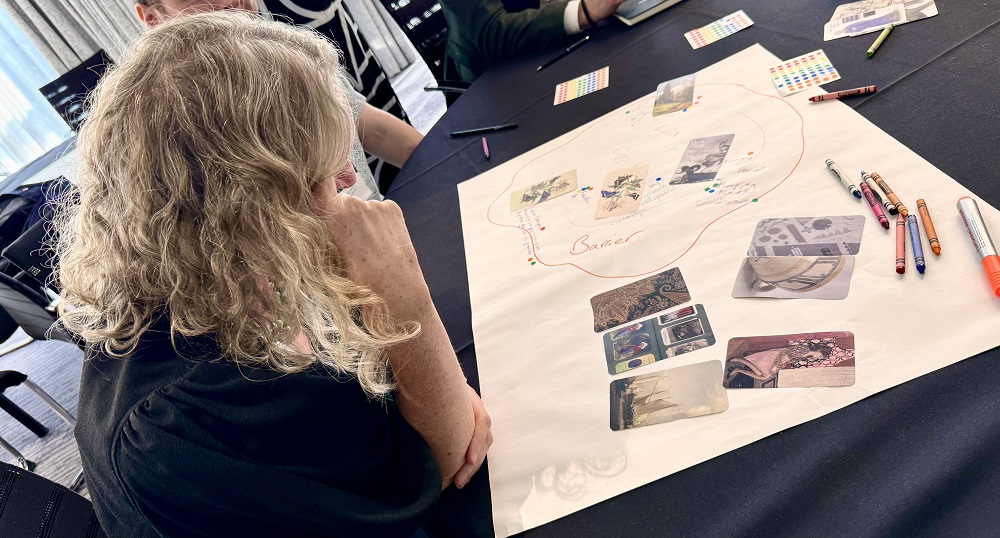
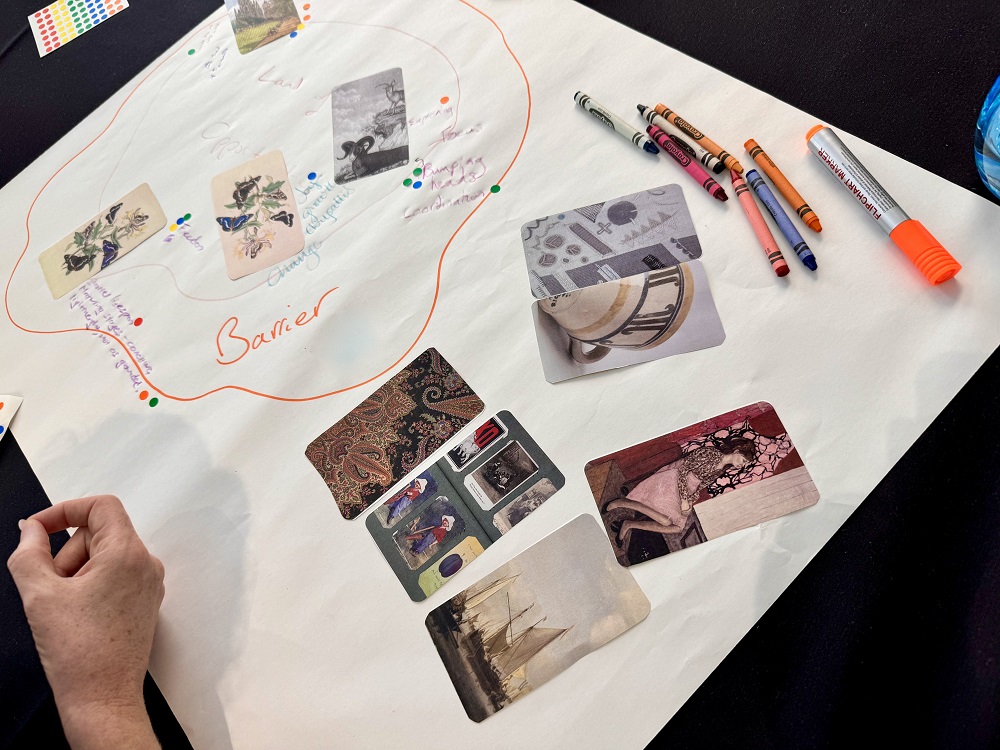
Unicorns
Lawrie Phipps, Peter Bryant, and Donna Lanclos delivered a beautifully produced, media-rich presentation on ‘The end of learning design’. With a wry hit of humour, they looked at the dissonance between complexities of learning design and practices with how universities are run and organised. Using the new frontier of GenAI tools as their example, they tackled the potential pitfalls in staying with tried and tested ways vs. running headlong into new tech without proper consideration of such things as expense, ethics, impact on staff wellbeing, and role stability.
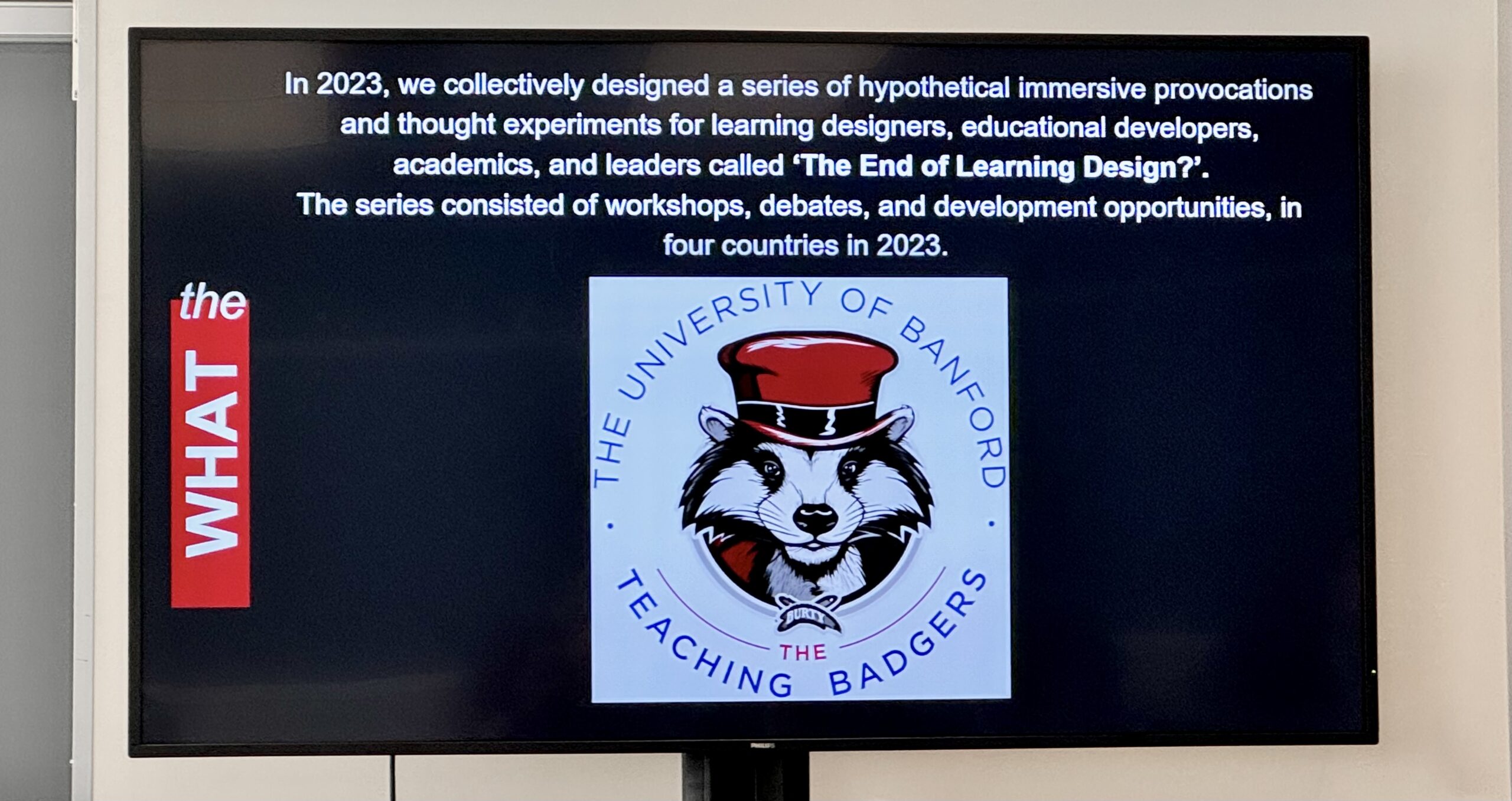
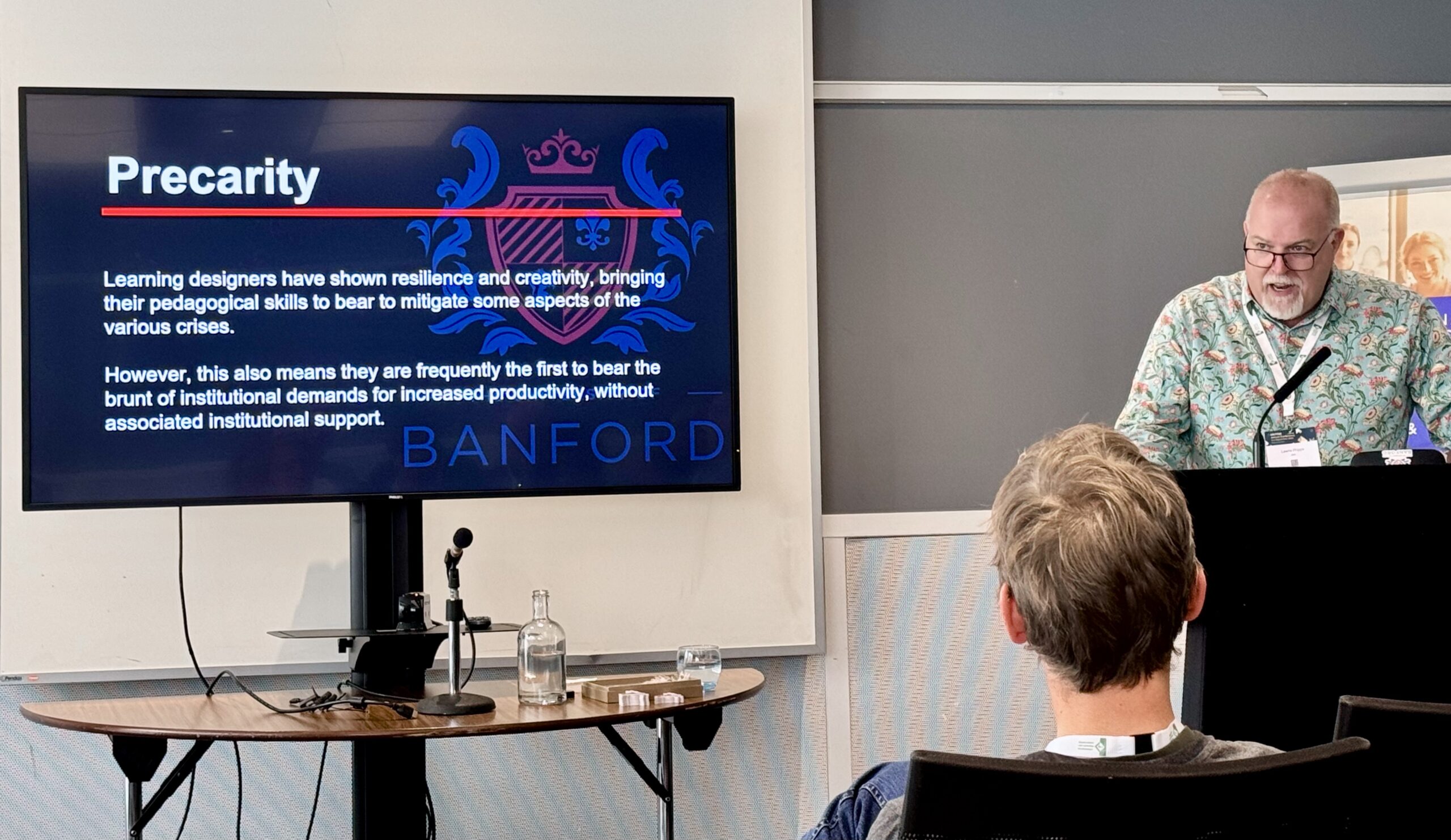
Student voice
Queen Mary University gave a fantastic presentation on embedding the student voice in digital provision. Student ambassadors shared how they’d revamped the student induction programme using Moodle, social media and sharing of personal experience. It was inspirational to hear about the successful outcomes of this student initiative in providing support for their fellow students.
Reimagining learning technology futures
Our Open University colleague Matthew Moran facilitated a workshop in which delegates were introduced to speculative design techniques, including science fiction prototyping, design fiction, and experiential futures. These are discursive and deliberative practices for ‘thinking possible worlds “out loud”’ (Candy, 2010); in other words, for describing, visualising, materialising and enacting possible future scenarios and long-term socio-technological outcomes, and, thereby creating opportunities for collective understanding, reflection and debate on emerging technologies and their implications (Groß and Mandir, 2024).
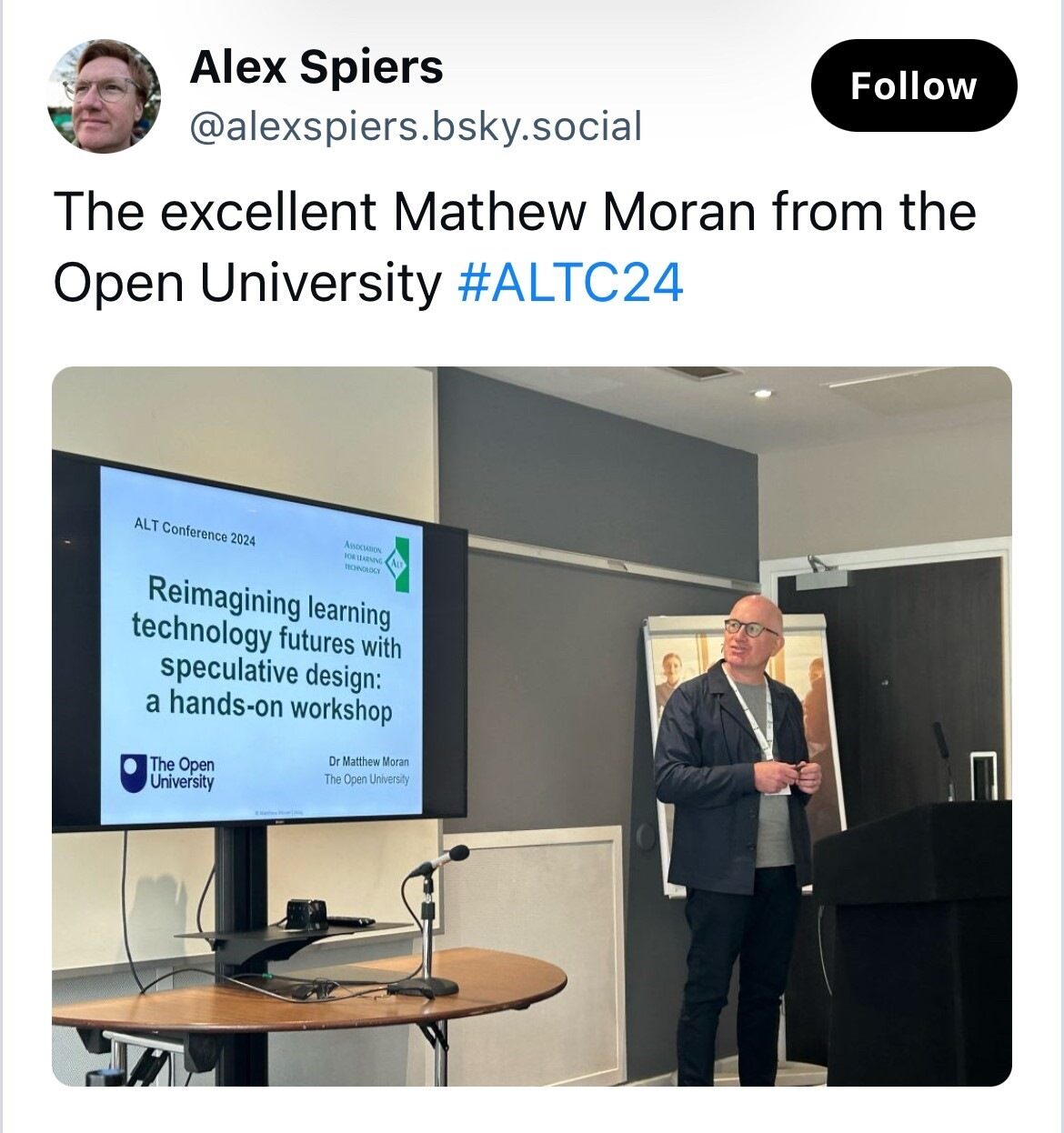
Attendees workshopped their own imagined 2050 edtech utopias, using ‘reverse sci-fi prototyping’ (based on Matthew’s own MSc research). It was wonderful to see (and hear) the agency and hopefulness in the room, and to witness colleagues’ readiness to codesign the future, rather than meekly accept corporate technology determinism.
More information on Matthew’s work, his ALT talk and workshop can be found on his website.
Special Interest Group launch and teamworking with Miro
On Day 3 we attended the new ALT SIG launch to introduce the Digital Sustainability SIG. Really pleased to have this space to discuss how sustainability concerns (economic, social and environmental) effect our roles in learning technology and learning design. The scope is wide and we can look forward to reflecting on AI, digital literacy, skills development, and carbon footprint. It was also great to have the opportunity to meet Chairs and Officers from the other new SIGs: Digital Accessibility, Digital Assessment, and Independent Consultancy/Career Pathways. We’re all looking forward to building up these communities. More info on the SIGs.
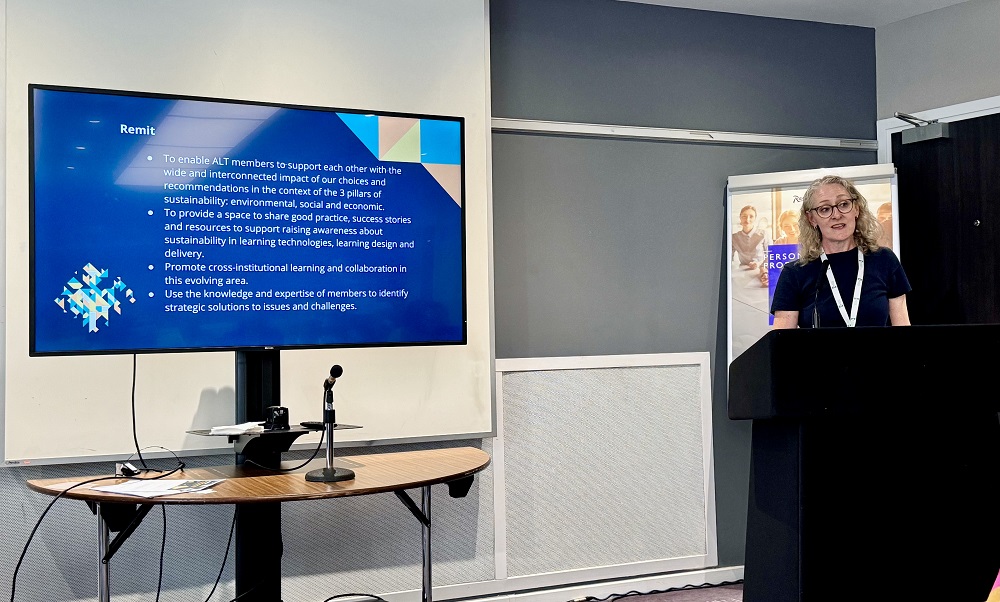
And last, but absolutely not least, was Shawndra and Kathleen’s presentation on using the digital whiteboard, Miro. We shared just three of the many ways the Learning Design team uses Miro for planning and engaging various partners and teams across the University. We also shared some of the feedback from module teams on their experiences of working with Learning Design in Miro that had been gathered by our colleagues Hayley Johns and Yvonne Carron. Using a wordcloud, we asked our ALT audience for their thoughts on using Miro for working in teams. Keywords included ‘flexibility’, ‘spatialises thinking’, ‘convenient’, ‘inclusion’, ‘democratisation’.
These terms reflect the positive experiences we’ve taken from our own team’s use of Miro. The inclusion aspect is a particularly important one for us. We presented on the afternoon of the last day of the conference, so nerves had been a bit jangly all week, anticipating standing in front of a room full of people and in front of a camera that was recording the live stream. Luckily, our colleague Hayley Johns has written a fabulous blog post on how to cope with being an introverted facilitator/presenter and, using some of her tips, we made it through!
We were pleased that there was a positive response to the presentation. Afterwards, we were approached by some attendees keen to get some tips on how to engage others when using Miro or other digital whiteboards.
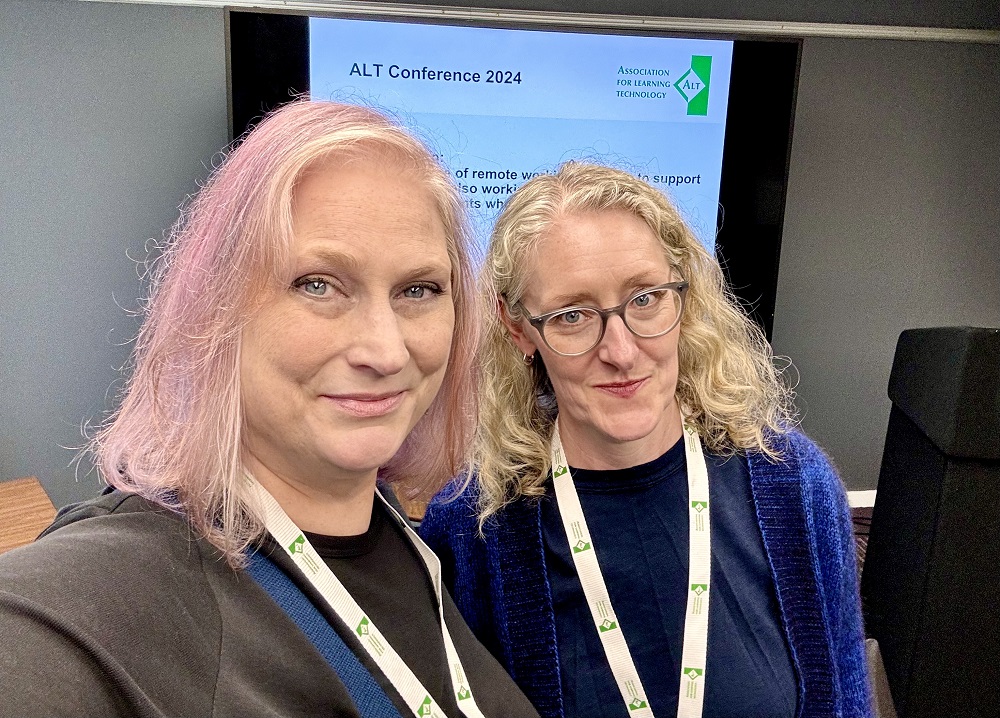
Final thoughts
We came away from the conference feeling inspired and better connected with our peers in the wider Higher Ed, Ed Tech, and Learning Design communities. It isn’t often we have the opportunity to spend time fully immersed in learning and teaching tech discussions due to the need to balance the practical demands of our day jobs and we really appreciated this space to explore these topics.
References:
Candy, S. (2010), The Futures of Everyday Life: Politics and the Design of Experiential Scenarios. Available at: https://doi.org/10.13140/RG.2.1.1840.0248 (Accessed 19 October 2024).
Groß, B. and Mandir, E. (2024) Designing Futures: Speculation, Critique, Innovation. London: Laurence King Publishing.
Banner image: via tattywelshie / Canva

